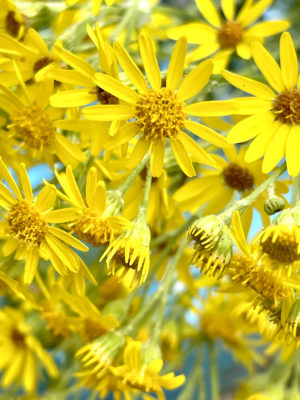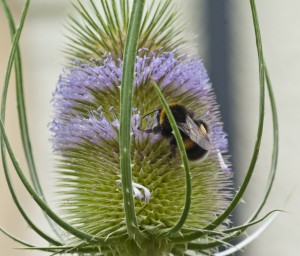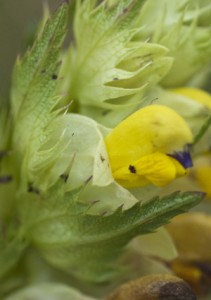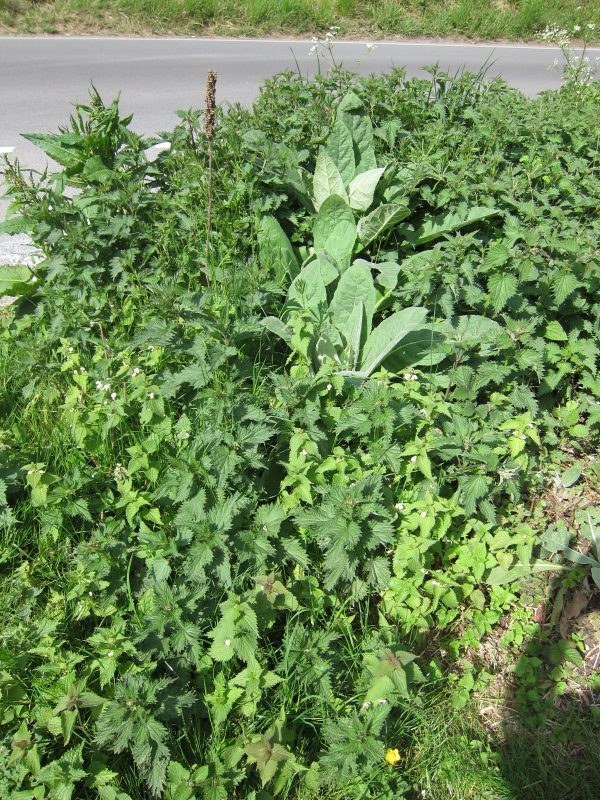Wildflowers of the roadsides and verges,

The woodlands blog has commented over the years about the loss of hedgerows, the homogenisation of the flora, and the disappearance of roadside plants. The loss of roadside plants is due to
- increasing eutrophication (‘enrichment’ of the environment with nitrates from fertilisers etc. which encourages ‘botanical thugs’ such as nettles )
- the regular (and early) mowing of roadside verges. If the verges are mowed early in the year, then early wildflowers are not able to set seed (and the seed bank in the soil is depleted).
Now there is an initiative by Plantlife to encourage local councils to look after roadsides and their verges. Roadsides and verges offer a home to some 700+ wild plant species; some 12% of these are at risk of extinction (A list of these species can be found in a report by Plantlife here (note : this link opens a PDF). The following is their list of the Top 10 of threatened plants growing on verges or roadsides:
- fen ragwort
- spiked rampion
- crested cow wheat
- tower mustard
- velvet lady’s mantle
- yellow broomrape
- sulphur clover
- wood calamint
- welsh groundsel
- wood bitter-vetch

Wildflowers are sources of nectar and pollen for bees and bumblebees , whose numbers are also in decline. Wildflowers also offer ‘homes’ for a variety of insects and other arthropods. Verges and roadsides are essentially the remnants of meadows and grasslands - most of which have been lost from the countryside since the inter-war period. Roadsides and their verges can form biodiversity corridors, which allow wildlife to move around in increasingly fragmented habitats.
A number of councils have recognised the importance of roadsides and verges and have instituted new regimes to protect plants. For example, Dorset Council has adopted Plantlife’s management guidelines and are investigating different methods of management to reduce soil fertility. Reducing the nutrient status of the soil means the grass growth is reduced - which means cutting is less frequent (saving money) and offers greater opportunities for wildflowers to grow. There are also  projects involving
projects involving
- grazing with sheep - which mimics traditional meadow management
- using yellow rattle (a partial parasite) to reduce the vigour of the grass.
- stripping off the top soil to expose subsoil - that is not so rich in nitrates, phosphates etc.
If you would like to support the Plantlife campaign to encourage councils to protect and preserve roadside verges, then visit the Plantlife website which has lots of information about the campaign and offers a simple form to complete - which will be sent to your local council : http://plantlife.love-wildflowers.org.uk/roadvergecampaign2016/#campaign

Roadside vegetation - mainly nettles!
Comments are closed for this post.

Thanks for this, have shared it over on my page at @Naturestimeline.StandUp4Nature on Facebook. Will share more widely over the next couple of days.
Best Wishes
Tony Powell and naturestimeline
Tony Powell
1 May, 2017